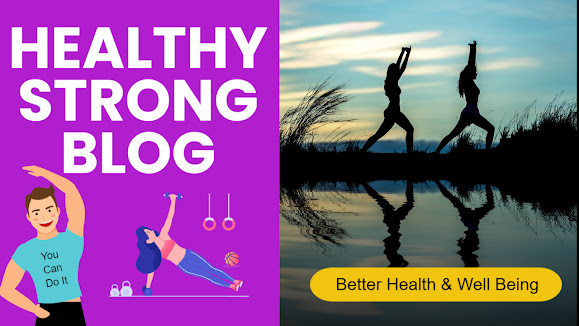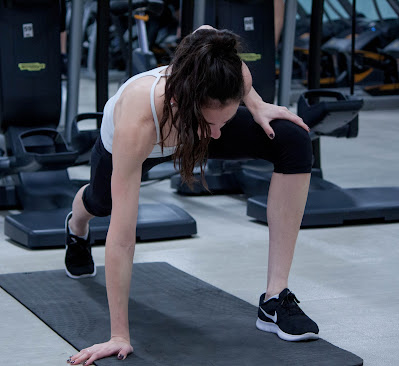Can Aerobic Exercise Build Muscle?
If you've ever wondered, "Can aerobic exercise
build muscle?" the answer is yes. In fact, it can help you achieve a
greater strength and muscular size, even if you're not training for a
weightlifting competition. Aerobic exercises increase the number of
mitochondria, which is an essential cellular component in energy production.
They also increase the thickness and number of fibers. As you do more intense
workouts, your muscles will adapt and grow stronger, and you'll lose fat at the
same time.
A study published in the journal Cell Physiology in 2007 showed that cardiovascular exercise can enhance muscle growth. Although this does not mean that it can build muscle, it can increase it. In fact, aerobic exercise increases muscle size, but the benefits of long-term cardio are not as clear.
A single 30-minute session of moderate intensity, paired with
strength training, is the minimum intensity for maximizing muscle growth.
Ideally, you'll perform the cardio before or after strength training, but don't
do it too often. It's important to know your limits before implementing any
fitness regimen.
In research published in 2010, scientists found that
aerobic exercise has a positive effect on muscle size. The results were
consistent across multiple studies, including men and women. Similarly,
high-intensity, short-term cardio increases anabolic signaling. These effects
were also seen in older adults and sedentary people. However, aerobic training
does not necessarily boost the growth of muscle mass as much as it has been
touted to do.
In addition to improving cardiovascular health, aerobic
exercise may reduce the growth of muscle. Wait, what? Low-intensity workouts can lead to
catabolic reactions in the muscles, which hinder muscle development. In order
to gain muscle mass, so resistance training is required. The key to effective
aerobic exercise is using sufficient levels of resistance and progressive
overload. It also requires a proper diet and plenty of protein. This is why
many people choose to combine strength and aerobic exercises to achieve their
goals.
Both strength and aerobic exercises have proven to be beneficial for muscle size. There are two main types of aerobic exercises: endurance and strength training. In the former, they promote muscle growth while aerobic exercises increase catabolic reactions. The latter, on the other hand, promotes loss of muscle tissue.
In both cases, the benefits of cardio and
resistance training are similar. But the type of intensity and duration of both
workouts differ. Moreover, the results of these two exercises are different. If
the intensity of your cardio is too high, it may reduce the chances of
achieving a positive effect on muscle size.
In addition to promoting muscle growth, aerobic
exercise also improves your overall health. It is not necessary to lift weights
in order to build muscle. You can use resistance-based exercises to increase
your fitness level and burn fat. They are also beneficial for your muscles. If
you're considering doing aerobic exercises, consider that it's the best way to
gain muscle. The right intensity and frequency are the key factors. Achieving
your fitness goals through strength training will increase the amount of nutrients
your muscles need.
Strength Exercises that Complement Aerobic Exercises
There are many benefits to incorporating strength
exercises into your fitness routine. They increase your metabolism and build
muscles. Moreover, they can improve your cardiovascular fitness. Performing
strength training activities should be a part of your workout program to get
the best results. Here are some examples of these activities. All of them can
be done without a gym or at home. In addition, they can help you stay fit and
healthy. They also help you lose weight.
Resistance training is an excellent way to boost your
overall fitness. It works by making your muscles work against an external
resistance. This resistance is typically in the form of dumbbells, rubber
exercise tubing, or your body weight. Similarly, you can do it with bricks,
trees, or any other object that can exert a force on your muscles. It's
important to find an appropriate form of resistance and make regular
adjustments to your routine.
For your body part, resistance bands are an ideal option. You can use them for one arm or both. You can learn the proper technique by following the instructions on the adidas Training app. When using these exercises, you should perform them for 30 seconds at a time.
You can
increase the amount of repetitions as you get stronger. During this workout,
you should hold the bands taut with both hands. Then, you can start doing
step ups or lateral pulldowns. Then, you can move onto the next set of
resistance band exercise.
What are the Benefits of Resistance Training?
The benefits of resistance training extend well beyond
improving strength. It also improves your overall health and quality of life as
you age. When you begin doing resistance training, you should begin with lighter
weights and gradually increase the weights and reps until you have mastered the
routine. This is particularly beneficial if you are a beginner. Once you get
the hang of resistance exercises, you can gradually increase the weights and
repetitions. After a few weeks, you should be able to lift heavier weights with
more ease.
The benefits of resistance training are numerous. It
helps you lose fat, boosts your mood, and helps reduce the risk of chronic
diseases. It can even improve your overall physical appearance. However, many
adults over 50 fail to reap the benefits of resistance training, because they
incorrectly believe it is only for young and fit people. So, it is important to
find the right kind of program for you to get the maximum benefit from it. Here
are some of the reasons why you should start using resistance training in your
routine:
How to Plan an Aerobics and Resistance
Training Schedule
When you plan your fitness routine, you should begin
with a warm-up and a cool-down. Before beginning a resistance training program,
perform at least five to 15 minutes of aerobic exercise. This can be done on a
stationary bike, treadmill, stair stepping machine, rowing machine, elliptical
training machine, or by simply walking. If you can't do this, consider taking
an aerobics class. The purpose of these exercises is to prepare your heart and
prepare your muscles for the workout.
Strength training causes tiny tears in muscle tissue,
which then knit together stronger. For this reason, you should rest at least 48
hours between strength training sessions. You can continue to do aerobic
exercises on days in between. For example, alternate upper- and lower-body
exercises on Monday and Tuesday, and upper-body exercises on Wednesday. You can
also do partial strength sessions on multiple days. Just make sure to follow
the recommended time frame for each.
When planning a routine for aerobics and resistance
training, remember to keep in mind the duration of each workout. Generally, one
session should last no more than an hour. More than that and you go into the
“diminishing returns” realm. The time between each strength-training session
should be at least 48 hours. On the days in-between, you can do aerobics. If
you do not have enough time to do both, you can also alternate upper-body and
lower-body exercises.












Comments
Post a Comment